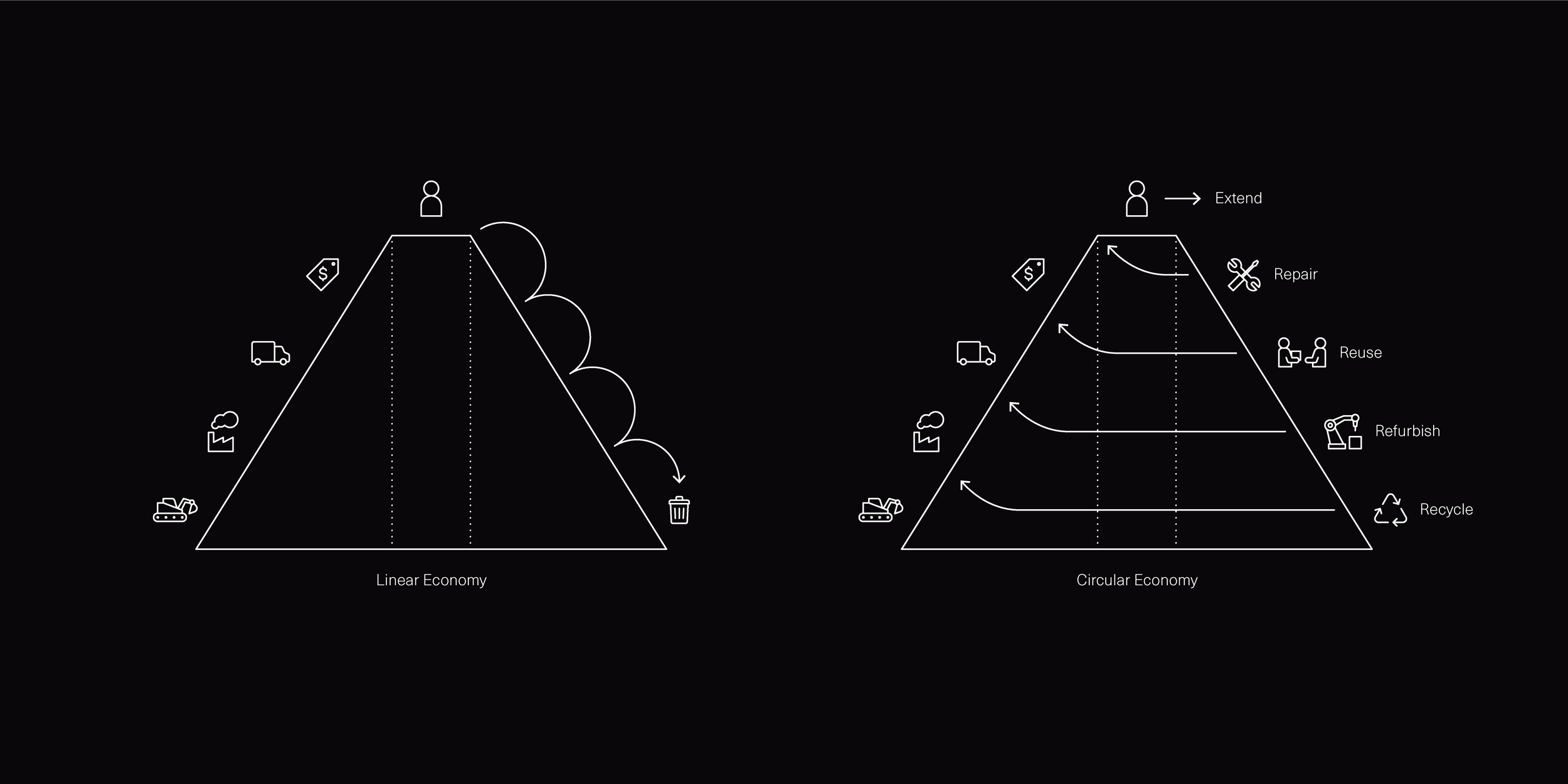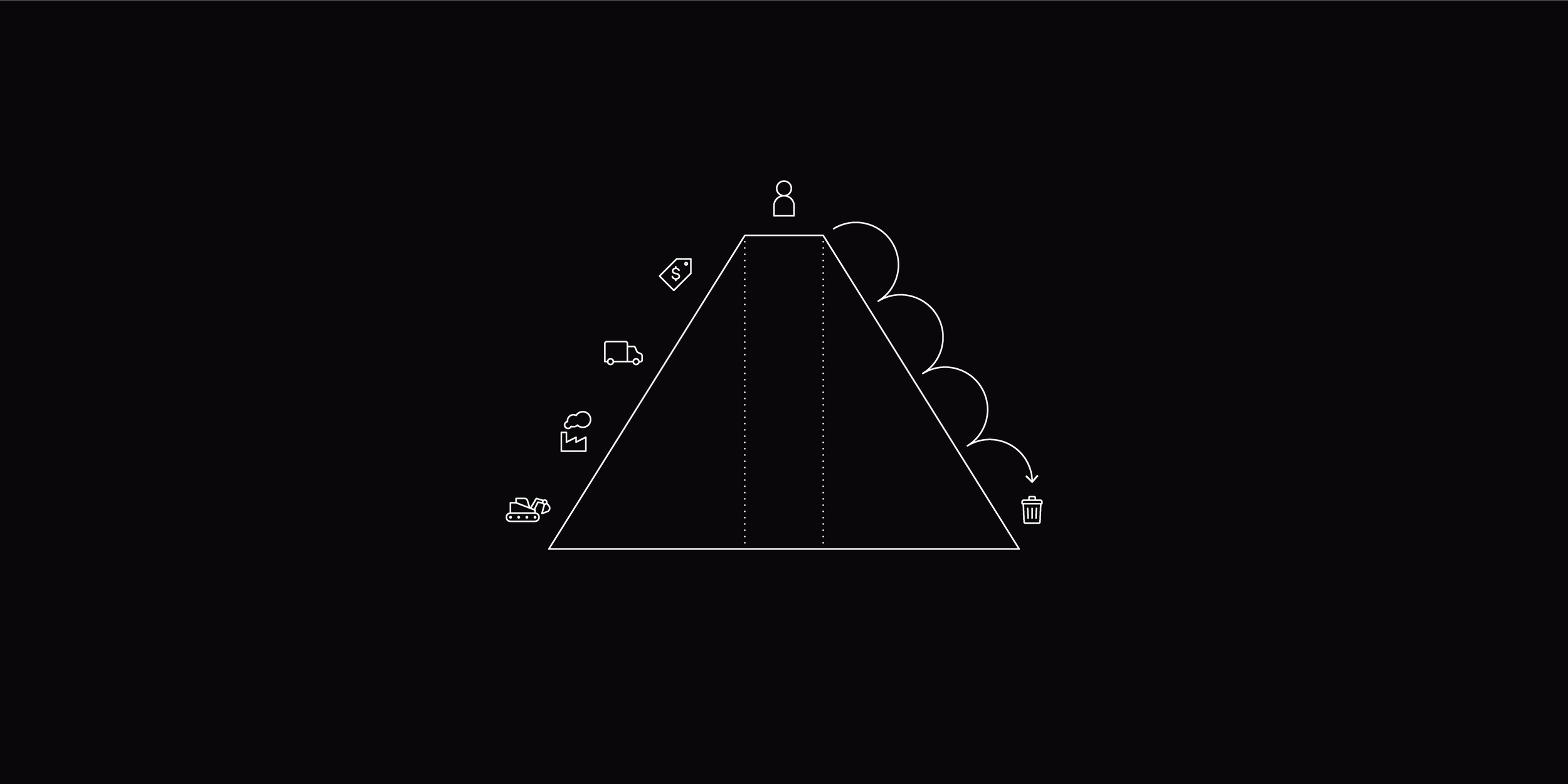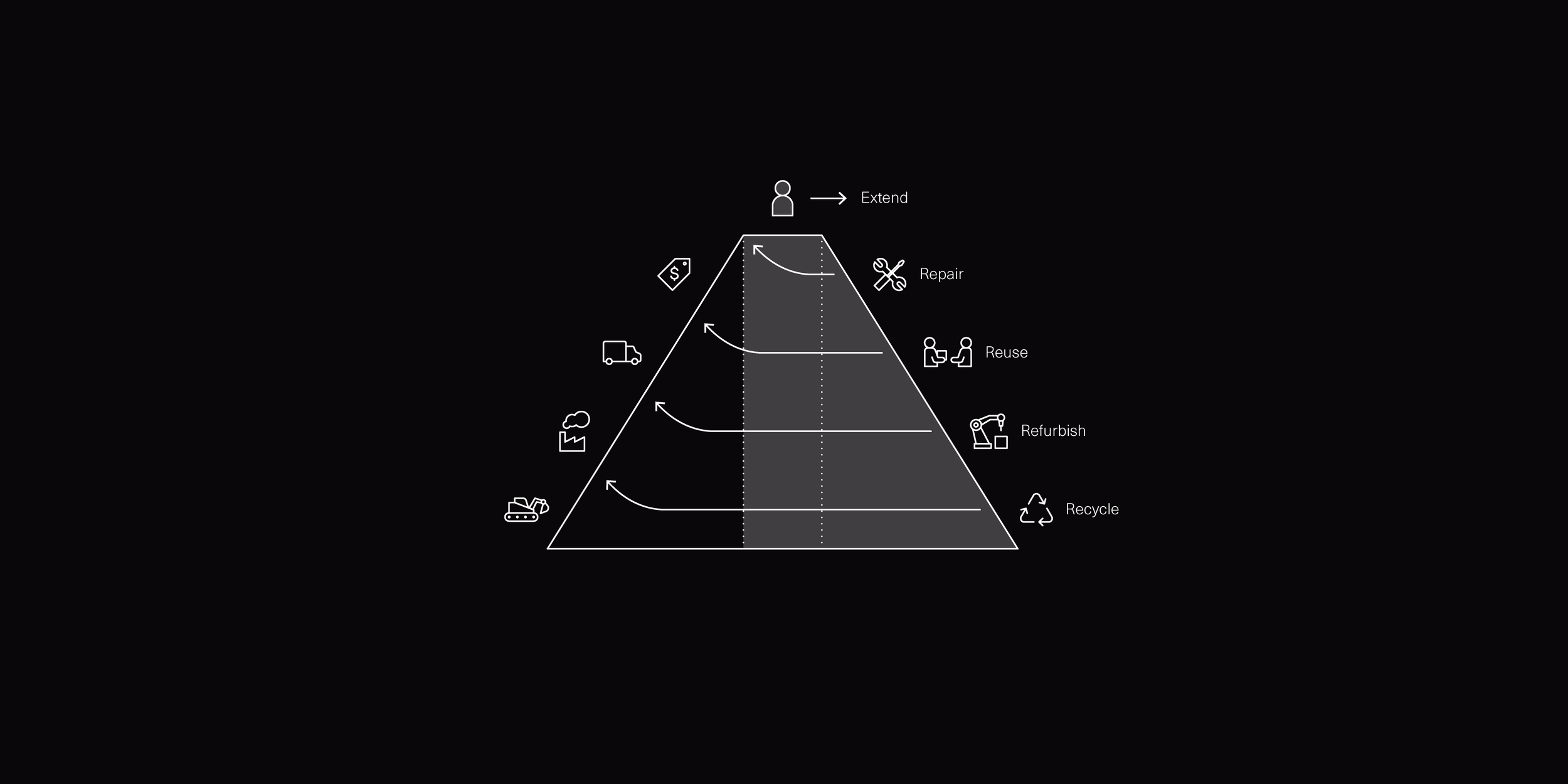Using the Value Hill to Unlock Circular Opportunities
The Value Hill framework is one of the most useful tools for helping businesses understand the relevance and potential of the Circular Economy.
Originally created in 2016 as a result of a collaboration between Circle Economy, Sustainable Finance Lab, Nuovalente and TU Delft, the Value Hill model reframes a product's lifecycle in the context of value. In doing so, it highlights the shortcomings of the prevailing linear model and the huge commercial opportunities available to businesses who embrace circularity.
The Linear Economy Value Hill
The diagram says it all really.
Businesses create value through their manufacturing processes and sales, resulting in a peak at the point of product purchase and use.
In most cases, any decline in the product's perceived value by the user results in a swift tumble down the hill where not even the residual material value is recovered.
The Circular Economy Value Hill
In a circular economy, the goal is to keep resources circulating at their highest value level for as long as possible. A range of services aims to recover, recapture and restore product value in a hierarchy that does everything it can to drive items back up the Value Hill.
This has two main benefits: Firstly, it avoids waste each time a product, component or material is successfully recirculated rather than escaping the system. Secondly, the process of recapturing and restoring value presents opportunities to reduce costs and generate new revenue streams.
It's this kind of win-win that allows businesses to transition to more sustainable practices while remaining viable and competitive.
So that’s the Value Hill… What does it mean for you and your business?
Key Takeaway 1: Aim for Rollercoaster Lifecycles
The downhill portion of the Value Hill represents progressive declines in a product's value which, depending on the product, may look something like this:
No longer wanted > No longer performing to expectation > Damaged but functional > No longer functional > No longer repairable > No longer salvageable
Rather than an inevitable tumble down the Value Hill after purchase, we should visualise product lifecycles as a rollercoaster journey. Each fall in perceived value should be met with a solution or service that restores its value and extends its useful life.
Key Takeaway 2: Recycling is a Last Resort
The Value Hill reinforces the waste hierarchy principle at the heart of the Circular Economy: keep resources circulating at the highest possible level. This also corresponds with the 5 R's we're all familiar with (you know - Refuse, Reduce, Reuse, Repurpose aaand… Recycle).
The Value Hill helps to illustrate why this priority order exists. Solutions nearer the top of the hill (e.g. repair) restore a product to maximum value while resulting in minimal waste. Towards the bottom of the hill (e.g. recycling) you recover minimal value with a high proportion of waste.
If you only focus on recycling, you’re probably missing many other opportunities to eliminate more waste and recover greater value.
Key Takeaway 3: Circular Revenue Opportunities
Looking at your current linear model through a Value Hill lens allows you to identify all the points where value is leaking from your system. Each of these value losses actually represents a potential revenue stream if you can recapture it through new circular services.
Maintenance support, repair services, re-use models, remanufacturing and materials recovery (to name a few) are commercial opportunities that can help you decouple your business growth from your environmental impact. More on decoupling here.
Key Takeaway 4: Design New User Experiences
Your customer doesn't just sit at the top of the hill. The success of these new circular revenue streams depends on user engagement.
From education about end-of-life options and ongoing customer support, to convenient returns and incentivised participation - you need to design these new experiences with the same level of consideration you give to your sales experiences.
Each of these touchpoints presents an opportunity to build stronger and longer lasting relationships with your customers. We’re talking about the kind of brand loyalty that a one-time sales model just can't buy.
Putting the Value Hill into Practice
One powerful way to apply the Value Hill to your own business is to map your current product lifecycle against it:
Plot the typical value journey of your product. Feel free to change the stages and labels to be specific to your value chain.
On the downward slope, list all the possible reasons for value decline. Start with minor issues near the top, down to catastrophic failure at the bottom.
For each decline scenario, brainstorm solutions and services to recover value and extend the useful life.
Explore how each solution might generate new revenue streams to identify the most viable opportunities.
Give it a go! Book a call if you’d like to run through the exercise with us or just want to bounce some ideas around.
Subscribe to our newsletter to get articles like this straight to your inbox!







